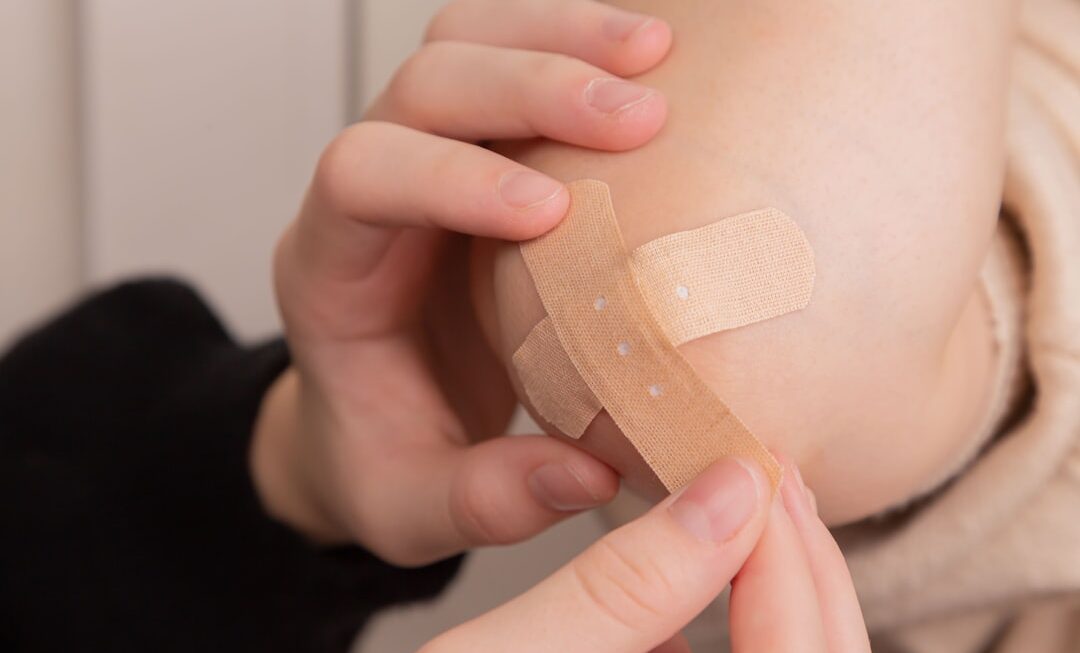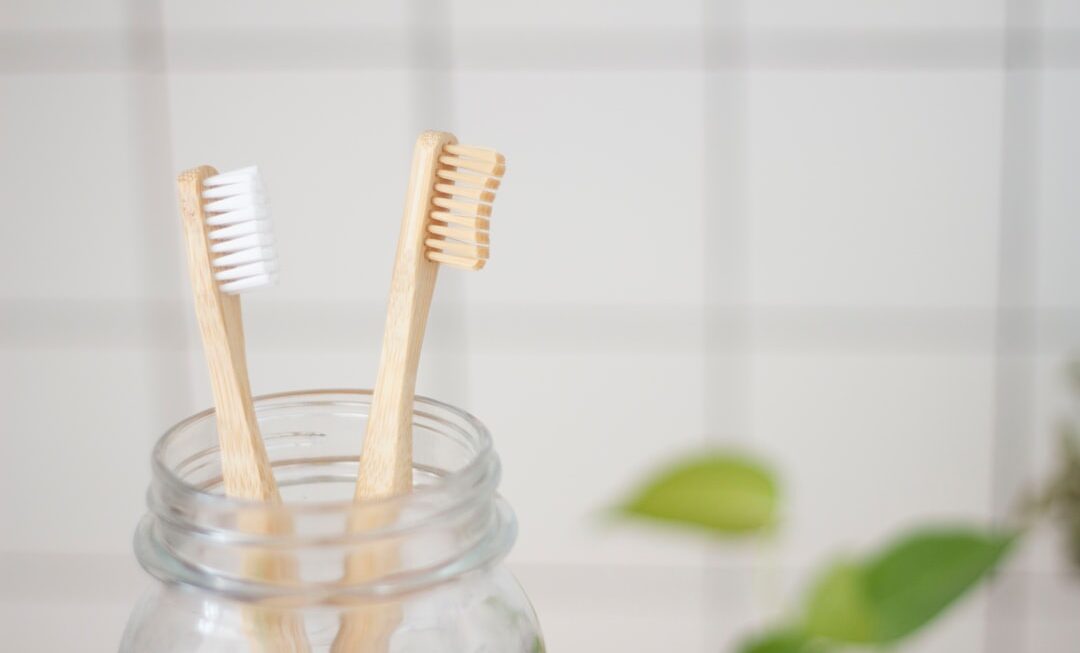Skin tape, also known as medical adhesive tape or surgical tape, is a type of adhesive bandage used for wound closure. It is made of a thin, flexible material that adheres to the skin to hold the edges of a wound together, promoting healing and preventing infection. Skin tape works by providing support to the wound site, keeping the edges of the wound in close proximity to each other, which allows for faster healing and reduces the risk of scarring. The adhesive on the tape is hypoallergenic and gentle on the skin, making it suitable for use on all skin types, including sensitive skin. Skin tape is commonly used in medical settings, such as hospitals and clinics, but it is also available for home use, making it a convenient and effective option for wound closure.
Skin tape works by creating a barrier over the wound, protecting it from external contaminants and preventing the edges from separating. This allows the body’s natural healing processes to take place without interference, resulting in faster and more efficient wound closure. The adhesive on the tape is designed to be strong enough to hold the wound together, but gentle enough to be removed without causing further damage or discomfort. Skin tape is available in various sizes and shapes to accommodate different types of wounds, making it a versatile option for wound closure. Overall, skin tape is an effective and easy-to-use method for closing wounds and promoting healing.
Key Takeaways
- Skin tape is a thin, adhesive strip used for wound closure, providing support and promoting healing.
- Advantages of using skin tape for wound closure include minimal scarring, flexibility, and ease of application.
- Different types of skin tapes available include paper, silk, and nylon, each with unique properties for specific wound types.
- Properly applying skin tape for wound closure involves cleaning the wound, aligning the edges, and gently applying the tape without stretching.
- Precautions and considerations when using skin tape include ensuring the wound is not infected, avoiding excessive tension, and monitoring for signs of irritation or allergic reaction.
- Comparing skin tape with other wound closure methods, it is less invasive than sutures and staples, and provides better cosmetic outcomes.
- Tips for choosing the right skin tape for your needs include considering the location and size of the wound, as well as any specific material preferences or allergies.
Advantages of Using Skin Tape for Wound Closure
There are several advantages to using skin tape for wound closure. One of the main benefits is its ease of use. Skin tape is simple to apply and does not require any special training or equipment, making it a convenient option for both medical professionals and individuals treating wounds at home. Additionally, skin tape is non-invasive and does not require any puncturing of the skin, reducing the risk of infection and minimizing discomfort for the patient. This makes it an ideal choice for closing small cuts, lacerations, and surgical incisions.
Another advantage of using skin tape is its flexibility and breathability. The thin, flexible material allows for natural movement and flexibility, making it comfortable for the patient to wear. The breathable nature of the tape also allows air to reach the wound, which can aid in the healing process. Additionally, skin tape is water-resistant, allowing patients to shower and bathe without worrying about the tape coming loose or becoming damaged. This makes it a practical option for wounds that require ongoing care and maintenance.
Furthermore, skin tape is cost-effective compared to other wound closure methods, such as sutures or staples. It is readily available at pharmacies and medical supply stores, making it easily accessible for both medical professionals and consumers. The versatility of skin tape also makes it suitable for a wide range of wound types and sizes, further adding to its cost-effectiveness. Overall, the advantages of using skin tape for wound closure make it a popular choice for medical professionals and individuals alike.
Different Types of Skin Tapes Available
There are several different types of skin tapes available, each designed for specific purposes and preferences. One common type of skin tape is paper tape, which is made of a thin, breathable paper material with hypoallergenic adhesive. Paper tape is gentle on the skin and suitable for use on sensitive areas, making it a popular choice for wound closure. Another type of skin tape is cloth tape, which is made of a soft, flexible fabric material with strong adhesive. Cloth tape is durable and provides excellent support for wound closure, making it suitable for larger or more complex wounds.
Additionally, there are silicone tapes that are designed to be gentle on the skin while providing strong adhesion. Silicone tapes are ideal for individuals with sensitive or fragile skin, as they minimize the risk of irritation or damage during removal. Another type of skin tape is waterproof tape, which is designed to be resistant to water and moisture. Waterproof tape is ideal for wounds that require protection from moisture, such as those located in areas prone to sweating or exposure to water.
Furthermore, there are transparent tapes that are designed to be nearly invisible on the skin, making them a discreet option for wound closure. Transparent tapes are often used on areas of the body where appearance is a concern, such as the face or hands. Overall, the different types of skin tapes available allow for customization and flexibility in choosing the most suitable option for specific wound closure needs.
How to Properly Apply Skin Tape for Wound Closure
| Steps | Details |
|---|---|
| Clean the wound | Use mild soap and water to gently clean the wound and surrounding skin. |
| Dry the area | Pat the wound and surrounding skin dry with a clean towel or gauze. |
| Apply skin tape | Cut the tape to the desired length and apply it across the wound, ensuring it is not too tight or too loose. |
| Smooth the tape | Gently press down on the tape to ensure it adheres to the skin properly. |
| Check for proper closure | Ensure the wound is properly closed and the skin tape is secure. |
Proper application of skin tape is essential for effective wound closure and optimal healing. Before applying skin tape, it is important to clean the wound and surrounding skin thoroughly with mild soap and water to remove any dirt or debris. Once the area is clean and dry, carefully align the edges of the wound and hold them together with gentle pressure. Next, select an appropriate size and type of skin tape for the wound, ensuring that it is long enough to cover the entire length of the wound with some overlap on either side.
To apply the skin tape, gently peel off the backing while holding the edges of the wound together, then carefully press the adhesive side of the tape onto the skin over the wound. Smooth out any wrinkles or air bubbles in the tape to ensure a secure and even application. It is important to avoid stretching or pulling on the skin tape during application, as this can cause discomfort or damage to the skin. Once the tape is in place, apply gentle pressure to ensure that it adheres securely to the skin.
After applying the skin tape, it is important to monitor the wound regularly for signs of infection or irritation. If the skin around the tape becomes red, swollen, or painful, or if there is any discharge from the wound, it may be necessary to remove and replace the tape or seek medical attention. Additionally, it is important to follow any specific instructions provided by a healthcare professional regarding care and maintenance of the wound while the skin tape is in place. Proper application of skin tape is crucial for successful wound closure and optimal healing.
Precautions and Considerations when Using Skin Tape
While skin tape is generally safe and effective for wound closure, there are some precautions and considerations to keep in mind when using it. It is important to avoid applying skin tape too tightly, as this can restrict blood flow to the area and cause discomfort or damage to the skin. Additionally, individuals with sensitive or fragile skin should be cautious when using skin tape, as it may cause irritation or damage during removal.
It is also important to consider any allergies or sensitivities to adhesives when choosing a type of skin tape. Some individuals may have allergic reactions to certain adhesives used in skin tapes, so it is important to test a small area of skin before applying the tape to a larger area. If there is any redness, itching, or irritation after testing the adhesive, it may be necessary to choose a different type of skin tape or seek an alternative method for wound closure.
Furthermore, it is important to follow any specific instructions provided by a healthcare professional regarding the use of skin tape for wound closure. This may include recommendations for care and maintenance of the wound while the tape is in place, as well as guidelines for when and how to remove the tape. It is important to seek medical attention if there are any concerns about the healing process or if there are signs of infection or irritation around the wound site.
Overall, taking precautions and considering individual needs and sensitivities when using skin tape can help ensure safe and effective wound closure.
Comparing Skin Tape with Other Wound Closure Methods

There are several methods available for wound closure, each with its own advantages and considerations. When comparing skin tape with other wound closure methods such as sutures or staples, there are several factors to consider. One advantage of using skin tape over sutures or staples is its ease of application. Skin tape does not require any special training or equipment to apply, making it a convenient option for both medical professionals and individuals treating wounds at home.
Additionally, skin tape is non-invasive and does not require puncturing of the skin like sutures or staples do. This reduces the risk of infection and minimizes discomfort for the patient during application and removal. Skin tape also allows for natural movement and flexibility due to its thin, flexible material, making it comfortable for patients to wear compared to sutures or staples.
Furthermore, skin tape is cost-effective compared to sutures or staples. It is readily available at pharmacies and medical supply stores, making it easily accessible for both medical professionals and consumers. The versatility of skin tape also makes it suitable for a wide range of wound types and sizes, further adding to its cost-effectiveness.
However, there are certain situations where sutures or staples may be more appropriate than skin tape for wound closure. For example, wounds that are deep or have jagged edges may require sutures or staples to provide more secure closure and promote optimal healing. Additionally, wounds located in areas prone to movement or tension may benefit from sutures or staples over skin tape.
Overall, when comparing skin tape with other wound closure methods such as sutures or staples, it is important to consider individual needs and preferences as well as specific characteristics of the wound in order to make an informed decision.
Tips for Choosing the Right Skin Tape for Your Needs
When choosing a skin tape for wound closure, there are several factors to consider in order to select the most suitable option for individual needs. One important factor to consider is the type of adhesive used in the skin tape. Individuals with sensitive or fragile skin may benefit from choosing a skin tape with hypoallergenic adhesive that minimizes the risk of irritation or damage during removal.
Another factor to consider is the size and shape of the skin tape. It is important to select a size that will adequately cover the entire length of the wound with some overlap on either side in order to provide secure closure and protection. Additionally, choosing a shape that conforms to the contours of the body can help ensure a comfortable fit and secure adhesion.
Furthermore, considering specific needs such as waterproofing or transparency can help narrow down options when choosing a skin tape. Individuals with wounds that require protection from moisture may benefit from choosing a waterproof skin tape, while those concerned about appearance may prefer a transparent option that is nearly invisible on the skin.
It is also important to consider any specific instructions provided by a healthcare professional regarding care and maintenance of the wound while using skin tape. This may include recommendations for how long to keep the tape in place before removing it, as well as guidelines for monitoring the healing process and seeking medical attention if necessary.
Overall, taking into account individual needs such as adhesive sensitivity, size and shape requirements, specific features like waterproofing or transparency, as well as any specific instructions from healthcare professionals can help ensure that the right skin tape is chosen for effective wound closure.
Overall, taking into account individual needs such as adhesive sensitivity, size and shape requirements, specific features like waterproofing or transparency, as well as any specific instructions from healthcare professionals can help ensure that the right skin tape is chosen for effective wound closure. It is important to consider the patient’s comfort and skin condition when selecting a skin tape, as well as any potential allergies or sensitivities. Additionally, understanding the specific requirements of the wound, such as the level of moisture or flexibility needed for proper healing, can guide the selection of the most appropriate skin tape. Healthcare professionals can provide valuable insight and recommendations based on their expertise and knowledge of the patient’s medical history. By carefully considering these factors, the most suitable skin tape can be chosen to promote optimal wound healing and patient comfort.
If you’re interested in learning more about skin tape and its benefits, you should check out this article on Optimal Life Essence. This article provides in-depth information on the different types of skin tape available and how it can be used to support various skin conditions. It also discusses the potential benefits of using skin tape as part of a skincare routine. Whether you’re looking to address specific skin concerns or simply want to improve the overall health and appearance of your skin, this article is a great resource for understanding the potential of skin tape.
FAQs
What is skin tape?
Skin tape is a type of adhesive tape that is specifically designed for use on the skin. It is commonly used for wound care, securing medical devices, and providing support for injured or strained muscles and joints.
What is skin tape made of?
Skin tape is typically made of a hypoallergenic adhesive that is gentle on the skin. Some skin tapes are also made with breathable materials to allow air to reach the skin and promote healing.
How is skin tape used?
Skin tape is used by applying it directly to the skin to secure bandages, dressings, or medical devices in place. It can also be used to provide support for injured areas of the body, such as wrapping around a sprained ankle or wrist.
Is skin tape waterproof?
Some skin tapes are designed to be waterproof, meaning they can be worn while showering or swimming without losing their adhesive properties. However, it is important to check the specific product labeling to determine if the skin tape is waterproof.
Is skin tape safe for sensitive skin?
Many skin tapes are designed to be hypoallergenic and gentle on the skin, making them safe for use on sensitive skin. However, individuals with known skin sensitivities or allergies should always test a small area of skin before using skin tape more extensively.
Can skin tape be used on children?
Skin tape can be used on children, but it is important to ensure that the product is appropriate for their age and that it is applied and removed carefully to avoid causing any discomfort or irritation. It is always best to consult with a healthcare professional for specific guidance on using skin tape on children.



